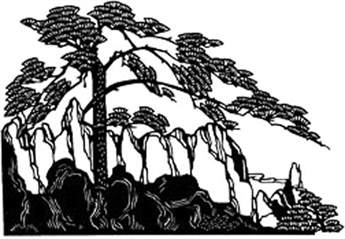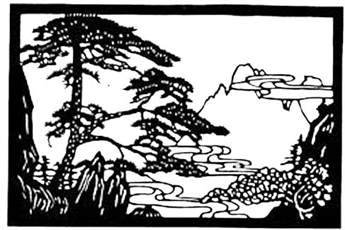How To Draw Landscapes
In Simple and Easy Steps
For The Absolute Beginner
How to draw landscapes will be simple if you follow along with these easy steps.
To become competent in drawing, any landscape you see before you—or in your imagination—a little practice and patience will make a huge difference. Get out your ring-binder sketchbook and start drawing.
Then put a date on them so you can see how you are developing your drawings!
How to draw landscapes will be simple if you follow along with these easy steps.
To become competent in drawing, any landscape you see before you—or in your imagination—a little practice and patience will make a huge difference. Get out your ring-binder sketchbook and start drawing. Then put a date on them so you can see how you are developing your drawings!
The standard shape for drawing a landscape is a rectangle sometimes called a “picture plane.” In other words it is longer in the width and shorter in the height.
Your picture can be any size or shape you desire—from square, rounds, oval, vertical oblong or even round. Start off with the rectangle first with your thumbnail pencil sketches which is the basic “rough plan” of how your drawing or painting guidelines.
More landscapes are drawn (or painted) with the horizontal rectangle as it lends itself to landscape scenes. Most landscapes are horizontal and people are vertical—hence the format term “portrait or landscape.”
Step One
The most important thing to do as a first step is a thumbnail sketch to ceate a rough guide for your finished drawing. Why? To ensure you have a good balance between the foreground, background and the horizon line. Getting a good composition here will save you heartaches down the line.
If your horizon line is exactly half way with sky and foreground, your drawing will be quite boring and “static.” So do not place anything dead center.
This is the biggest mistake beginners make, so make your horizon line one third the distance from the bottom or from the top.
These are the basics of good space divisions. See image below for “The rule of Thirds” but not the one on the left!
Creating Balance With Your Lanscapes
Step Two
Your landscape drawings must have a focal point. This is a small area in your drawing where your eyes tend to focus on – or where they come to “rest” All drawings—to be interesting—must have one or more so you “guide” your viewers eyes like a path through your drawing.
You can direct the attention of any viewer to a focal point or particular place in your drawing. In the image below, your eye will automatically go to the spot in the bottom right corner. In the next image we have five focal points but your eye ends up on the largest spot. The same for the third image where your eye is led in to rest on the largest focal point again. This is guiding your viewer to where YOU want it to go.
Create Focal Points in Your Landscapes: Use The Rule of Thirds in all your landscape drawings.
This is essential for all drawings and paintings, not only landscapes.
Step Three: Deciding on Your Focal Point
Where or what will you place your center point of interest? There is a golden rule when composing your drawing or painting; never make any two intervals identical—or the same distance apart, or the same size. This is why you use the “Rule of thirds.”
Here you divide your rectangle into thirds, both vertical and horizontal where they meet or crossover is the ideal spot in your drawing for your focal point. See the drawing below left (the rule of thirds).
Learning how to draw landscapes following these basic steps will give you confidence when confronted with a beautiful scene.
Creating Balance in your thumbnails – the following images are important which most artists ignore!
Step Four: You Drawing Must Have Balance
This is one of the main parts in creating a pleasant composition. Your drawing will lack balance if all your points of interest (focal points) are all cluttered on one side of your drawing.
You can of course have a “static” balance with the same size object on both sides of your drawing—or an object placed right in the middle. And both lead to a rather boring composition as in the illustration below.
Creating Balance in your thumbnail drawings
Step Five
When sketching your thumbnail which will eventually become your finished drawing, you must vary your values (the lightness or darkness of a color) to create areas of interest. Use only three values in your thumbnail sketch—white, medium gray and black.
There are ten values in all that make a clear definition between each one on the value scale. Below are the three you should use in your thumbnail sketch. The gray should be exactly between the white and the black.
Use Three Values in Thumbnail Sketch
On this page we have talked about these basic steps in Landscape drawing. These few points below are easy to remember and once you know them well, all the guidelines can be dumped in the trash can—for you no longer need them, you make your own rules on how to draw landscapes!
Standard Shapes
Focal Points
Rule of Thirds
Balance
Values






